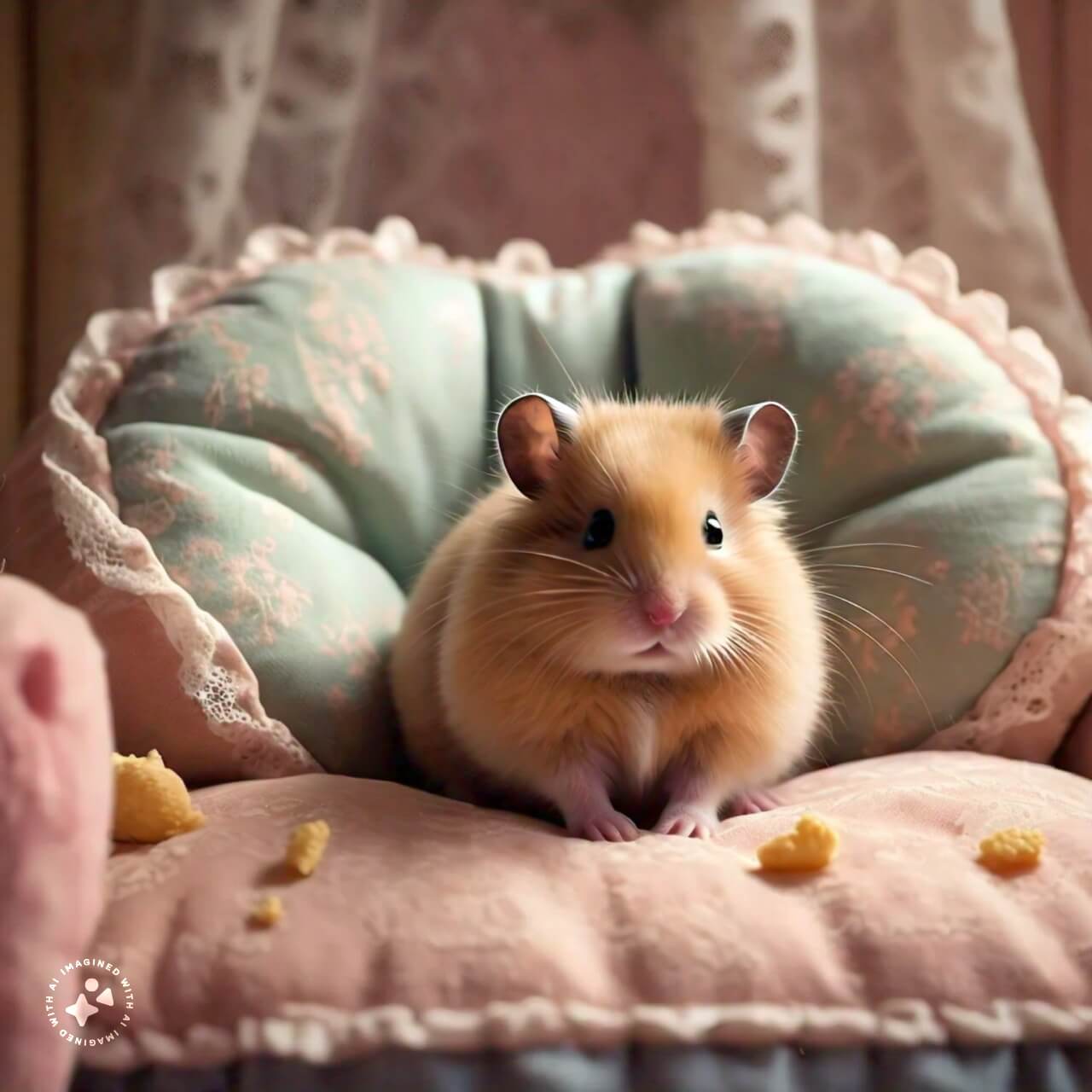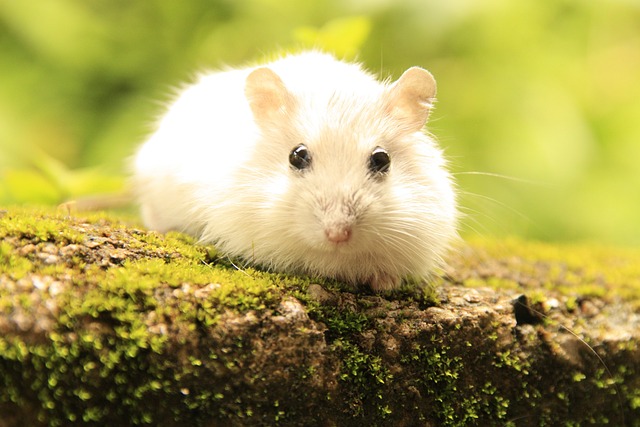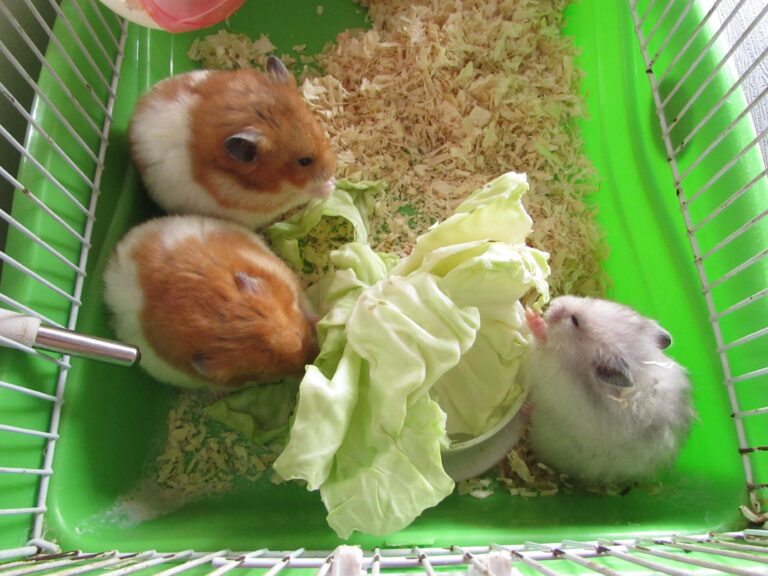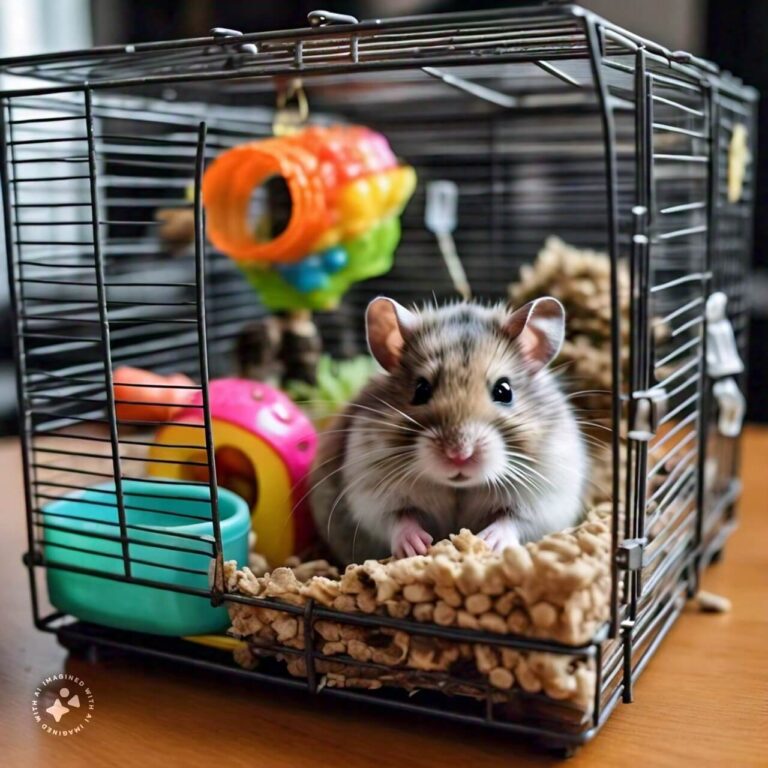Complete Knowledge About Golden Syrian Hamster – hamsters.pk
Understanding the Golden Syrian Hamster: Origins and Characteristics
The Golden Syrian Hamster, also known as the Teddy Bear Hamster or simply Syrian Hamster, is a popular small pet cherished by animal lovers around the world. Its endearing nature and manageable care requirements make it a favorite among both novice and experienced pet owners.
Origins of the Golden Syrian Hamster
The story of the Golden Syrian Hamster begins in the Middle East, where these small rodents were first discovered in the Syrian desert. It wasn’t until the early 20th century that they were introduced to the scientific community and subsequently to the pet industry. These hamsters were initially used in research due to their tame nature and ease of care, which later contributed to their popularity as household pets.
Physical Characteristics
The Golden Syrian Hamster is renowned for its golden-brown fur, though selective breeding has introduced a wide range of coat colors and patterns. These hamsters typically weigh between 120 to 125 grams and can grow up to 6-7 inches in length, making them one of the largest in the pet hamster community.
Their bodies are robust and stocky, with shorter tails compared to other rodents. One of the most distinctive features of the Syrian Hamster is its cheek pouches, which extend from its cheeks to its shoulders, allowing it to carry food and bedding materials back to its nest.
Behavioral Traits
Golden Syrian Hamsters are solitary creatures. In the wild, they are used to living alone, and this trait has been preserved in domestic settings. They are known for their nocturnal behavior, being most active during the evening and night, which can be a delightful spectacle for night owls in the family.
Unique Qualities
These hamsters have a reputation for being very docile and easy to handle, making them excellent pets, especially for children who handle them gently. They are also known for their ability to quickly adapt to human schedules, although they are naturally more active at night.
In conclusion, the Golden Syrian Hamster is not only a pet with a rich history but also a delightful companion with a set of intriguing characteristics. Their easy care and friendly nature make them an ideal choice for families looking for a small pet to cherish. Whether you’re a first-time hamster owner or looking to learn more about your furry friend, understanding these origins and traits can help you provide a loving and stimulating environment for your Golden Syrian Hamster.
Proper Care and Diet for Your Golden Syrian Hamster
Golden Syrian hamsters, often known simply as Syrian hamsters, are popular pets due to their docile nature and ease of care. To ensure a healthy and happy life for your hamster, it’s important to understand the specifics of proper care and diet. This article covers everything from the ideal diet to the right environmental setup.
Essential Dietary Needs of Golden Syrian Hamsters
Golden Syrian hamsters are omnivores, which means they thrive on a diet that includes both plant-based and animal-based foods. A well-balanced diet for a Syrian hamster should consist of:
- High-quality hamster pellets: These should form the foundation of your hamster’s diet as they are formulated to provide all the necessary nutrients.
- Fresh fruits and vegetables: Introduce these in small amounts to avoid digestive issues. Suitable options include carrots, broccoli, apples, and cucumbers. Always wash thoroughly and cut into manageable pieces.
- Protein sources: Enhance their diet with occasional treats of cooked eggs, mealworms, or small pieces of cooked chicken.
Avoid sugary and high-fat foods, as these can lead to obesity and health issues in hamsters.
Water Intake and Hydration
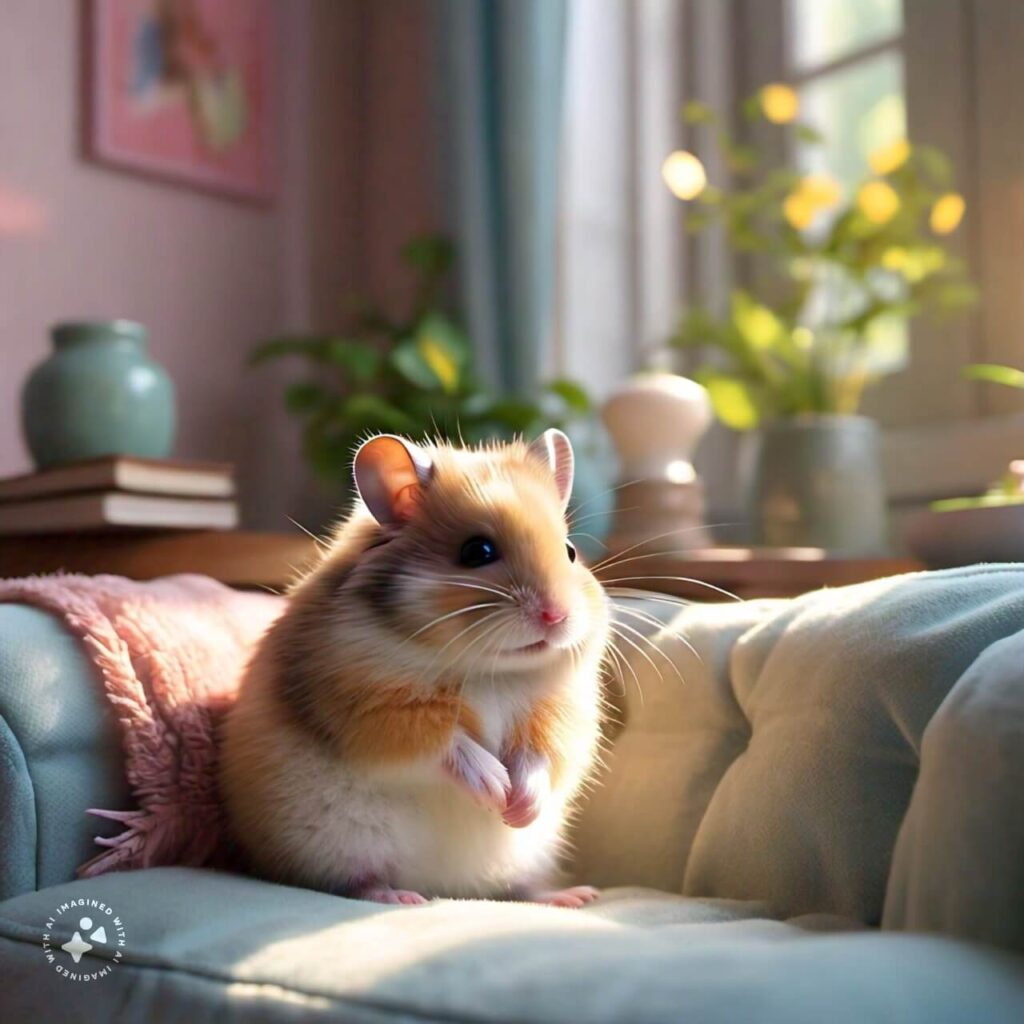
A constant supply of fresh, clean water is crucial for your Golden Syrian hamster. Always use a water bottle instead of a bowl to keep the water clean and free from bedding debris. Check daily to ensure the water bottle is functioning properly and is accessible to your hamster.
Creating the Right Environment
The habitat of your Golden Syrian hamster plays a significant role in its overall well-being. Consider the following when setting up your hamster’s home:
- Spacious enclosure: Syrian hamsters require a good amount of space to explore and exercise. A cage with a solid floor, room for a nesting area, and ample space for toys and a wheel is ideal.
- Bedding: Use absorbent, dust-free bedding to keep the environment clean and odor-free. Avoid pine or cedar wood shavings, as they can be harmful to your hamster’s respiratory system.
- Exercise and enrichment: Provide a wheel for running, tunnels for exploration, and chew toys to help keep your hamster’s teeth in good condition.
Handling and Interaction
Regular, gentle handling can help to tame your Golden Syrian hamster and build a bond between you and your pet. Always approach your hamster slowly and allow it to sniff your hand before picking it up. Supporting their body fully, scoop them from below rather than grabbing them from above to prevent stress.
By following these guidelines, you can ensure that your Golden Syrian hamster leads a healthy, active, and enriched life. Remember, a well-cared-for hamster is a friendly and entertaining companion for years to come.
Common Health Issues and Preventative Measures for Golden Syrian Hamsters
Golden Syrian hamsters are beloved for their cuddly appearance and friendly nature, making them a popular choice among pet owners. However, like all pets, they are prone to certain health issues. Understanding these potential problems and implementing preventive measures can help ensure a longer, healthier life for your furry friend.
Recognizing Signs of Illness in Golden Syrian Hamsters
It’s crucial to monitor your hamster for signs of illness, as early detection can significantly impact the effectiveness of treatment. Common symptoms to watch for include lethargy, loss of appetite, unusual hair loss, limping, or changes in feces. Regular checks can help you spot these signs early, facilitating prompt veterinary care.
Respiratory Infections: Symptoms and Prevention
Respiratory infections are common in Golden Syrian hamsters, often characterized by difficulty breathing, nasal discharge, and frequent sneezing. To prevent these conditions, ensure your hamster’s cage is well-ventilated and kept away from drafts and damp areas. Regular cleaning and disinfecting of the cage can also minimize the risk of infections.
Dental Problems: A Common Concern
Golden Syrian hamsters are prone to dental issues due to their continuously growing teeth. Overgrown teeth can lead to difficulty eating and severe health complications. Provide your hamster with plenty of chew toys and fibrous food to help naturally wear down their teeth. Regular check-ups with a vet can ensure that any dental abnormalities are addressed promptly.
Skin Conditions and Parasites: How to Protect Your Hamster
Skin problems, such as mites, lice, and fungal infections, can cause irritation and discomfort in your hamster. Maintaining a clean living environment is crucial for prevention. Additionally, regular grooming sessions allow you to check for any signs of skin disease and treat them before they escalate.
Obesity and Exercise: Maintaining a Healthy Weight
Obesity is a significant health concern for Golden Syrian hamsters, primarily due to inadequate exercise and overfeeding. Ensure your hamster has access to a running wheel and other forms of physical enrichment. Balanced, portion-controlled feeding, tailored to the nutritional needs of hamsters, is essential to prevent weight gain and associated health issues.
Stress: A Silent Killer
Stress can adversely affect the immune system of a Golden Syrian hamster, making it more susceptible to various diseases. Minimize stress by providing a stable, quiet environment and handling your hamster gently. Avoid sudden changes in their routine or environment to help keep stress levels low.
Conclusion: Proactive Care Is Key
By being aware of the common health issues that affect Golden Syrian hamsters and taking proactive steps to prevent them, you can ensure a fulfilling and healthy life for your pet. Regular veterinary visits, a proper diet, and a clean, stimulating environment are the pillars of good health. Remember, a healthy hamster is a happy hamster!
By implementing these tips, you can help guard against common ailments and ensure that your Golden Syrian hamster leads a vibrant and healthy life.
Fun Facts and Behaviors of Golden Syrian Hamsters
Introduction to the Golden Syrian Hamster
The Golden Syrian hamster, also known simply as the Syrian hamster, is a favorite among pet enthusiasts around the world. Originally from the deserts of Syria, these small rodents are known for their docile temperament, expressive eyes, and soft golden fur. Let’s dive into some fascinating aspects of their behavior and some fun facts that make them unique.
Nocturnal Nature: Why Your Hamster is Active at Night
One of the most noticeable behaviors of Golden Syrian hamsters is their nocturnal activity. These little creatures are most active during the night and prefer to spend the daytime hours sleeping. This behavior is an evolutionary trait, helping them avoid daytime predators in the wild. For pet owners, this means that most of the playful and active behaviors, such as running on the wheel or exploring the cage, occur during the evening or night.
Solitary By Nature: The Importance of Individual Housing
Unlike some other rodent pets that thrive in groups, Golden Syrian hamsters are solitary creatures. They prefer to live alone, and housing more than one in the same cage often leads to aggressive behaviors and serious injuries. For pet owners, it’s important to provide each hamster with its own space, complete with food, water, and entertainment.
Hoarding Habits: A Glimpse Into Their Survival Instincts
Golden Syrian hamsters have an intriguing behavior of hoarding food. They often stuff their cheek pouches, which can stretch to astonishing sizes, with food and bedding materials to transport back to their nest or a hideout. This behavior is a survival mechanism in the wild, allowing them to store food for times of scarcity.
Escape Artists: Their Love for Exploration
These hamsters are curious and love to explore, which unfortunately makes them adept escape artists. They can find and squeeze through small gaps or climb to surprising heights. Ensuring a secure, escape-proof habitat is crucial for keeping them safe and contained.
Conclusion: Delightful Companions with Unique Traits
Golden Syrian hamsters offer a fascinating glimpse into the world of small pets with their distinctive behaviors and endearing characteristics. Whether it’s their nocturnal antics, solitary nature, hoarding habits, or their love for exploration, these hamsters make delightful pets that are relatively easy to care for. Understanding and appreciating these traits can help owners create a nurturing environment for their furry friends.

